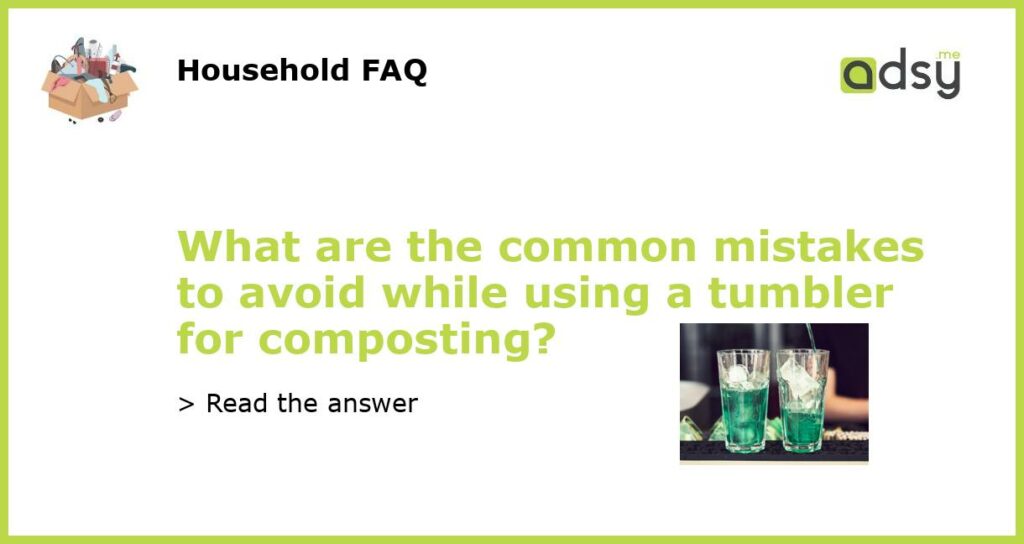Not properly balancing the compost
One of the most common mistakes when using a tumbler for composting is not properly balancing the compost materials. The ideal compost recipe includes a mixture of “green” materials, such as food scraps and fresh grass clippings, and “brown” materials, such as dried leaves and twigs. Without a proper balance of these materials, the compost may become too wet or too dry, leading to a slower decomposition process.
It is important to add the materials in layers, alternating between the green and brown materials. This will help create a good balance of carbon and nitrogen, which are essential for the breakdown of organic matter. Additionally, ensure that the compost is regularly turned or rotated to mix the materials and provide oxygen for the microorganisms that facilitate the decomposition process.
Adding inappropriate materials
Another common mistake when using a tumbler for composting is adding inappropriate materials to the compost pile. Certain materials should never be composted, as they can either disrupt the decomposition process or introduce harmful pathogens into the finished compost. For example, meat, dairy products, and oily foods should be avoided, as they can attract pests and create an unpleasant odor.
In addition to avoiding certain food items, it is important to exclude materials such as plastic, metal, glass, and treated wood from the compost pile. These materials will not decompose and can contaminate the finished compost. It is always best to refer to a comprehensive list of what should and should not be composted to ensure you are adding the appropriate materials to your tumbler.
Neglecting moisture levels
Maintaining the right moisture level is crucial for successful composting. If the compost pile becomes too dry, the decomposition process slows down, and the microorganisms responsible for breaking down the materials cannot thrive. On the other hand, if the pile becomes too wet, it can become compacted and reduce the oxygen flow necessary for decomposition.
To maintain the ideal moisture level, the compost pile should be as moist as a wrung-out sponge. This can be achieved by periodically adding water to the compost or adjusting the amount of moisture in the materials being added. A good way to check the moisture level is to squeeze a handful of compost. If it feels too dry, add water. If it feels too wet, add some dry brown materials to absorb the excess moisture.
Failing to aerate the compost
Adequate aeration is essential for the composting process. Oxygen is necessary for the microorganisms to break down the organic matter into nutrient-rich compost. When using a tumbler, it is important to regularly rotate or turn the compost to provide oxygen to all parts of the pile.
Some tumblers are designed with built-in mechanisms that make turning easier. However, if your tumbler does not have this feature, you can manually rotate it every few days using a pitchfork or shovel. Turning the compost also helps distribute moisture and heat evenly throughout the pile. Aim to rotate the tumbler at least once a week for optimal results.
Not being patient
Composting is a natural process that takes time. Some individuals may expect to have finished compost in just a few weeks, but in reality, it can take several months or even a year for the compost to fully break down and become usable in the garden. Patience is key when using a tumbler for composting.
It is important to allow the microorganisms to work their magic and break down the organic matter at their own pace. Trying to rush the process by adding more materials or constantly turning the compost may actually hinder the decomposition process. Trust in the natural process and give the compost the time it needs to transform into black, crumbly compost that can be used to enrich the soil in your garden.






